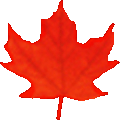
Common menu bar links
Institutional Links
-
Translation Bureau
Language Portal of Canada
-
TERMIUM Plus®
-
Index N
- namable
- nameable
- names of Canadian universities (Linguistic recommendation from the Translation Bureau)
- names of government departments (Linguistic recommendation from the Translation Bureau)
- nano-
- nas-
- naso-
- National Assembly
- National Capital Region
- nay
- NB
- N.B.
- NDT
- near
- necessary prerequisite
- need
- needs
- neither … nor
- neo-
- Net (Linguistic recommendation from the Translation Bureau)
- neuro-
- never used to
- New Brunswick
- Newfoundland and Labrador
- Newfoundland Daylight Time
- Newfoundland Standard Time
- new French spelling (Linguistic recommendation from the Translation Bureau)
- new innovation
- new recruit
- Nfld.
- NL
- N.L.
- no
- noci-
- noct-
- nocti-
- non-
- nona-
- non-flammable
- non-inflammable
- non sequitur
- Northwest Territories
- Norwego-
- notify
- not quite
- noun
- noun clause
- noun phrase
- noun used as an adjective
- Nova Scotia
- Nowel
- NS
- N.S.
- NST
- NT
- NU
- nulli-
- number
- numbers: age
- numbers: clarity
- numbers: comparative and inclusive numbers
- numbers: consistency
- numbers: decimal fractions
- numbers: governmental and historical designations
- number sign
- numbers in compound adjectives
- numbers: market quotations
- numbers: mathematical usage
- numbers: money
- numbers: names of organizations
- numbers: plurals
- numbers: quantities and measures
- numbers: ratios
- numbers: reference numbers
- numbers: Roman numerals
- numbers: round numbers
- numbers: spelled-out numbers
- numbers starting a sentence
- numbers used as nouns
- numbers: votes and scores
- number symbol
- numeric date
- Nunavut
- N.W.T.
Proactive Disclosure
Important notice
Writing Tips has been archived and won’t be updated before it is permanently deleted.
For the most up-to-date content, please consult Writing Tips Plus, which combines content from Writing Tips and The Canadian Style. And don’t forget to update your bookmarks!
Search and Functionalities Area
numbers: decimal fractions
In technical and statistical writing and with SI/metric units, decimals are preferred to fractions. The period is the usual decimal marker in English-language texts in Canada.
Normally, no number should begin or end with a decimal point. In numbers smaller than 1, a zero is written before the decimal point except in a small number of specific contexts:
- $0.64 (not $.64)
but
- a .39 calibre revolver
- .999 fine gold
- sugar, .05 (market quotation)
In whole numbers, the decimal point should either be dropped or be followed by a zero:
- 11 or 11.0 (not 11.)
Zeros may be used to indicate the number of decimal places to which a value is significant: 0.60 implies significance to two decimal places, 0.600 to three.
Separating groups of three numerals
In many countries the decimal marker is the comma instead of the period. For that reason, to avoid confusion, the Canadian Standards Association advises against the use of commas to separate groups of three digits. Instead, you should use a space to separate these groups, except in sums of money.
- 50 005 (not 50,005)
- 500 005 (not 500,005)
- 500 005 000 (not 500,005,000)
but
- $502,459
In the same way, a space should be used after groups of three digits to the right of a decimal point.
- 5.000 05
- 5.000 005
- 5.000 005 000
Note: Numbers of four digits only (on either side of the decimal marker) do not need to be spaced (except for consistency, when they are used together with other numbers of more than four digits).
- 5005 or 5 005
- 5.0005 or 5.000 5
Omit the space in page numbers, inclusive numbers, addresses, numbering of verse, telephone numbers, library numbers, serial numbers and the like.
© Public Services and Procurement Canada, 2025
TERMIUM Plus®, the Government of Canada's terminology and linguistic data bank
Writing tools – Writing Tips
A product of the Translation Bureau


